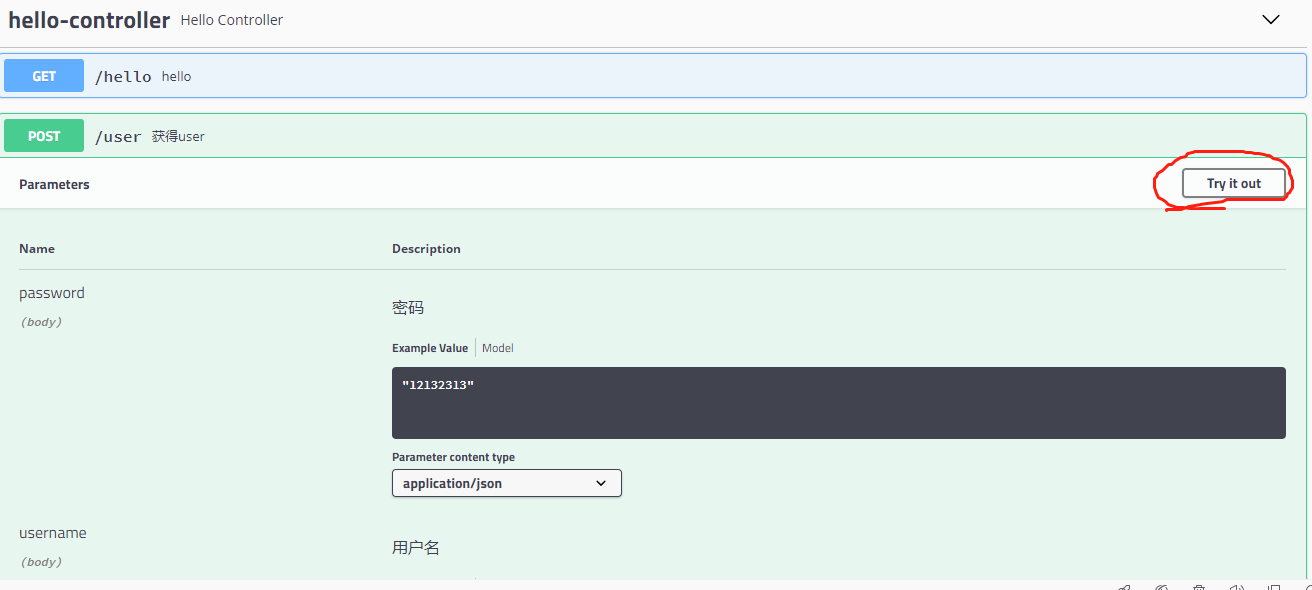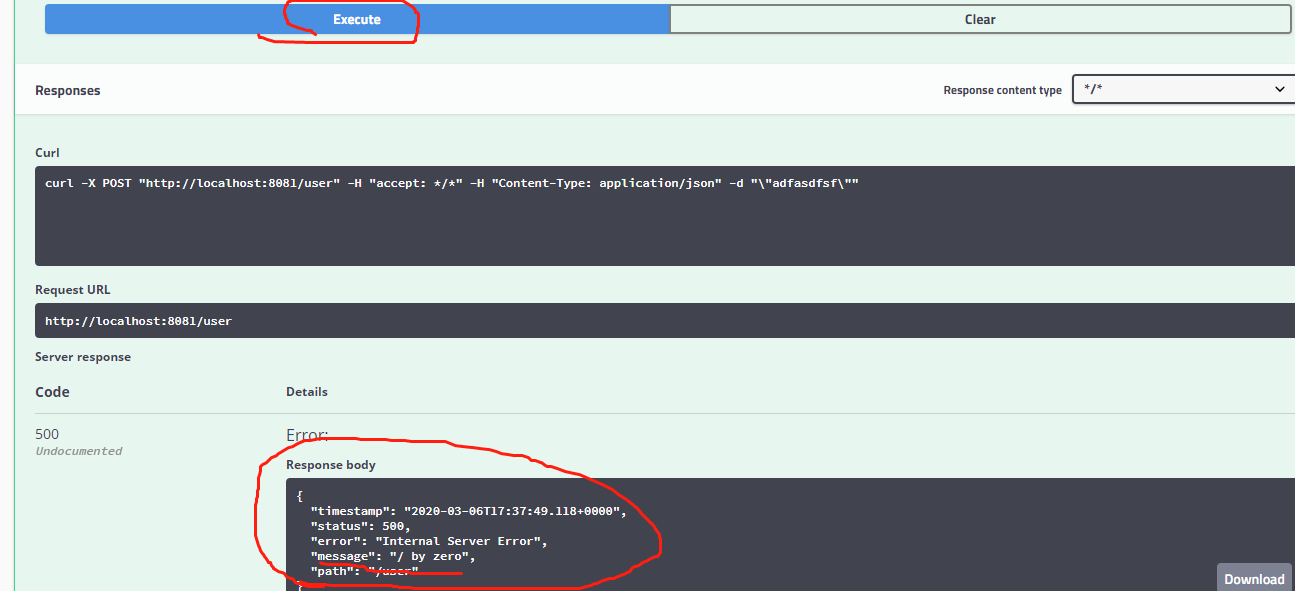2.在项目中使用Swagger需要springfox
(1)springfox swagger2
(2)springfox swagger UI
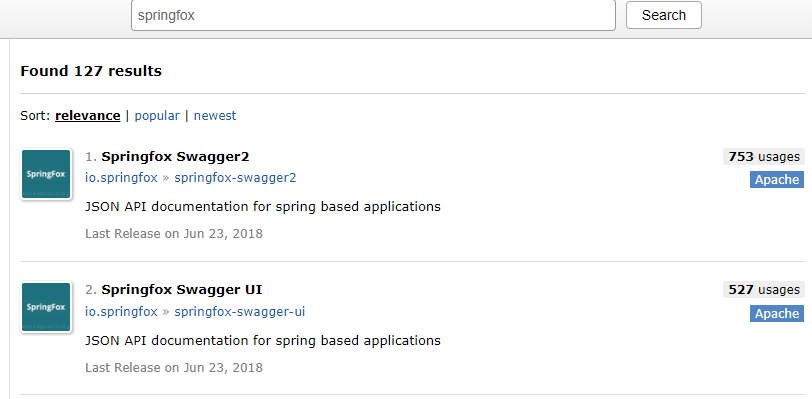
三.SpringBoot集成Swagger
1.步骤:
-
建立一个Springboot带Spring MVC的项目
-
导入两个依赖swagger2和swaggerUI
-
编写一个HelloController测试项目是否可以正常运行(略)
-
编写config配置Swagger
-
测试运行
2.新建SpringBoot的web项目

3.导入两个依赖swagger2和swaggerUI
<dependency>
<groupId>io.springfox</groupId>
<artifactId>springfox-swagger2</artifactId>
<version>2.9.2</version>
</dependency>
<dependency>
<groupId>io.springfox</groupId>
<artifactId>springfox-swagger-ui</artifactId>
<version>2.9.2</version>
</dependency>
4.编写config配置Swagger
import org.springframework.context.annotation.Configuration;
import springfox.documentation.swagger2.annotations.EnableSwagger2;
@Configuration
@EnableSwagger2 //开启Swagger2
public class SwaggerConfig {
}
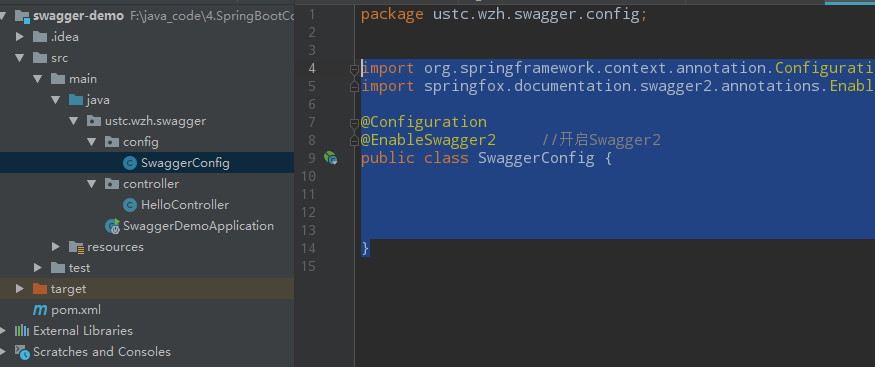
5.测试运行
-
http://localhost:8080/swagger-ui.html
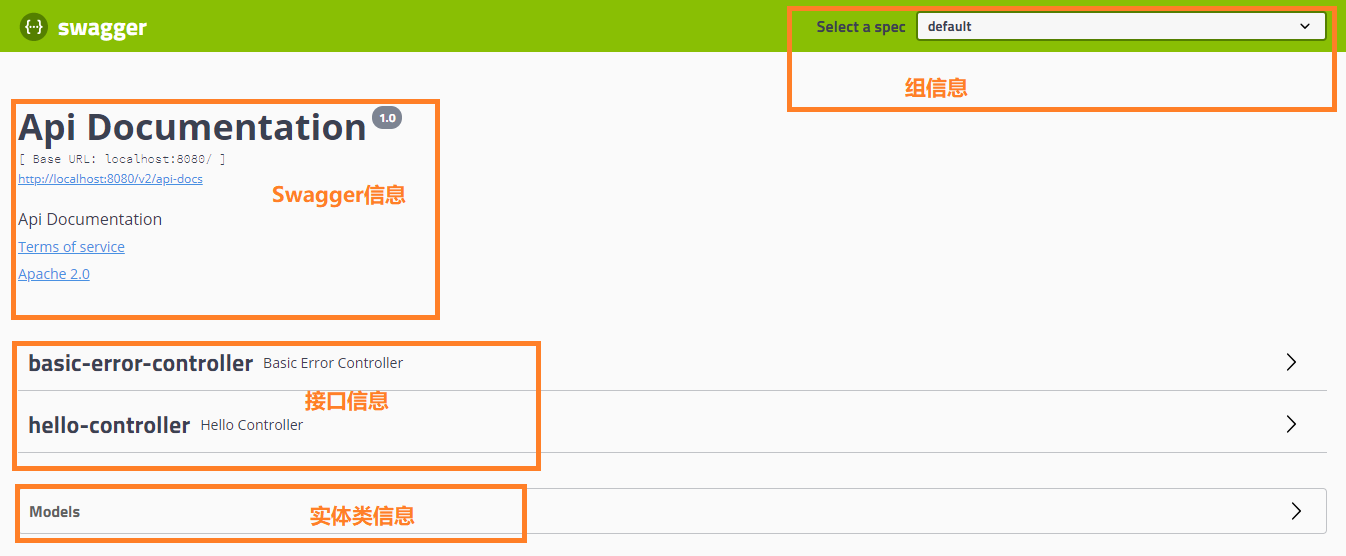
四.配置Swagger信息
import org.springframework.context.annotation.Bean;
import org.springframework.context.annotation.Configuration;
import springfox.documentation.service.ApiInfo;
import springfox.documentation.service.Contact;
import springfox.documentation.spi.DocumentationType;
import springfox.documentation.spring.web.plugins.Docket;
import springfox.documentation.swagger2.annotations.EnableSwagger2;
import java.util.ArrayList;
@Configuration
@EnableSwagger2 //开启Swagger2
public class SwaggerConfig {
//配置Swagger的Docker的bean实例
@Bean
public Docket docket() {
return new Docket(DocumentationType.SWAGGER_2)
.apiInfo(apiInfo());
}
//配置Swagger信息
private ApiInfo apiInfo() {
//作者信息
Contact contact = new Contact("wzh", "https://www.cnblogs.com/zhihaospace/", "464407764@qq.com");
return new ApiInfo(
"WZH的Swagger Api文档",
"Api 文档",
"1.0",
"https://www.cnblogs.com/zhihaospace/",
contact,
"Apache 2.0",
"http://www.apache.org/licenses/LICENSE-2.0",
new ArrayList()
);
}
}
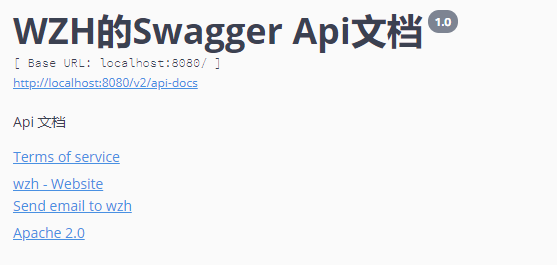
五.配置Swagger扫描接口
-
enable:通过springboot配置文件来配置是否显示spring-ui.html页面,注意端口号
-
apis:配置需要扫描的路径
-
paths:配置过滤掉的路径

import org.springframework.context.annotation.Bean;
import org.springframework.context.annotation.Configuration;
import org.springframework.core.env.Environment;
import org.springframework.core.env.Profiles;
import springfox.documentation.builders.RequestHandlerSelectors;
import springfox.documentation.service.ApiInfo;
import springfox.documentation.service.Contact;
import springfox.documentation.spi.DocumentationType;
import springfox.documentation.spring.web.plugins.Docket;
import springfox.documentation.swagger2.annotations.EnableSwagger2;
import java.util.ArrayList;
@Configuration
@EnableSwagger2 //开启Swagger2
public class SwaggerConfig {
//配置Swagger的Docker的bean实例
@Bean
public Docket docket(Environment environment) {
//配置 在dev或test生产环境下可以显示swagger环境,release环境下看不到Swagger
Profiles profiles = Profiles.of("dev","test");
//通过environment.acceptsProfiles判断是否处在设定的环境中
boolean flag = environment.acceptsProfiles(profiles);
return new Docket(DocumentationType.SWAGGER_2)
.apiInfo(apiInfo())
//enable 配置是否启用Swagger,为false则swagger-ui页面不能在浏览器中访问
.enable(flag)
.select()
/*
* RequestHandlerSelectors 配置要扫描接口的方式
* 参数:
* basePackage("ustc.wzh.swagger") 指定要扫描的包
* withClassAnnotation(RestController.class) 扫描类上的注解,参数是一个类注解的反射对象
* withMethodAnnotation(GetMapping.class) 扫描方法上的注解,参数是一个方法注解的反射对象
* any() 扫描全部
* none() 不扫描
*/
.apis(RequestHandlerSelectors.basePackage("ustc.wzh.swagger"))
/*
* paths 过滤路径(就是不去扫描的路径)
* any() 全部过滤
* none() 不过滤
* regex(/[a-z]/) 过滤到正则表达式代表的路径
* ant("xxx") 指定路径过滤
*/
//.paths(PathSelectors.ant("/wzh/**"))
.build()
;
}
//配置Swagger信息
private ApiInfo apiInfo() {
//作者信息
Contact contact = new Contact("wzh", "https://www.cnblogs.com/zhihaospace/", "464407764@qq.com");
return new ApiInfo(
"WZH的Swagger Api文档",
"Api 文档",
"1.0",
"https://www.cnblogs.com/zhihaospace/",
contact,
"Apache 2.0",
"http://www.apache.org/licenses/LICENSE-2.0",
new ArrayList()
);
}
}


六.配置API文档的分组
1.使用groupName方法设置即可
2.配置多个分组
@Bean
public Docket docket1(){
return new Docket(DocumentationType.SWAGGER_2).groupName("AAA");
}
@Bean
public Docket docket2(){
return new Docket(DocumentationType.SWAGGER_2).groupName("BBB");
}
@Bean
public Docket docket3(){
return new Docket(DocumentationType.SWAGGER_2).groupName("CCC");
}
七.实体类
-
如果我们的接口中返回值存在的实体类,则这个实体类就会被扫描到Swagger中
-
我们增加了@ApiModel和@ApiModelProperty注解就会在Swagger-ui中扫描到
import io.swagger.annotations.ApiModel;
import io.swagger.annotations.ApiModelProperty;
@ApiModel("用户实体类")
public class User {
@ApiModelProperty("用户名")
public String username;
@ApiModelProperty("密码")
public String password;
public User(String username, String password) {
this.username = username;
this.password = password;
}
}
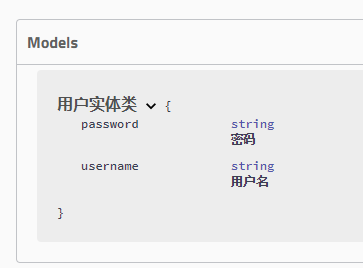
八.Controller中使用
-
最重要的是测试功能,此时我们在控制器中故意写除零操作导致错误,Swagger会显示Response错误的详细详细内容
import io.swagger.annotations.ApiOperation;
import io.swagger.annotations.ApiParam;
import org.springframework.web.bind.annotation.GetMapping;
import org.springframework.web.bind.annotation.PostMapping;
import org.springframework.web.bind.annotation.RestController;
import ustc.wzh.swagger.pojo.User;
@RestController
public class HelloController {
@GetMapping(value = "/hello")
public String hello(){
return "hello";
}
@ApiOperation("获得user")
@PostMapping(value = "/user")
public User user(@ApiParam("用户名") String username,@ApiParam("密码") String password){
int i = 5/0;
return new User(username,password);
}
}
